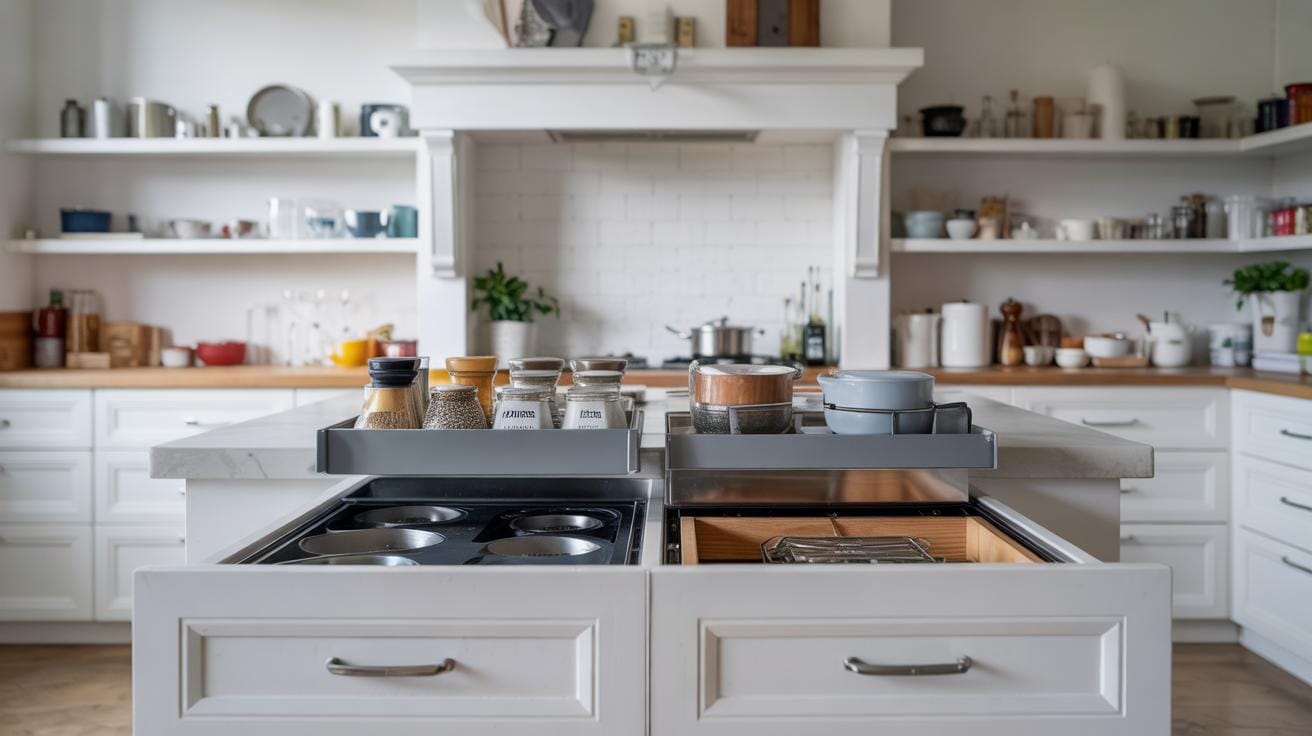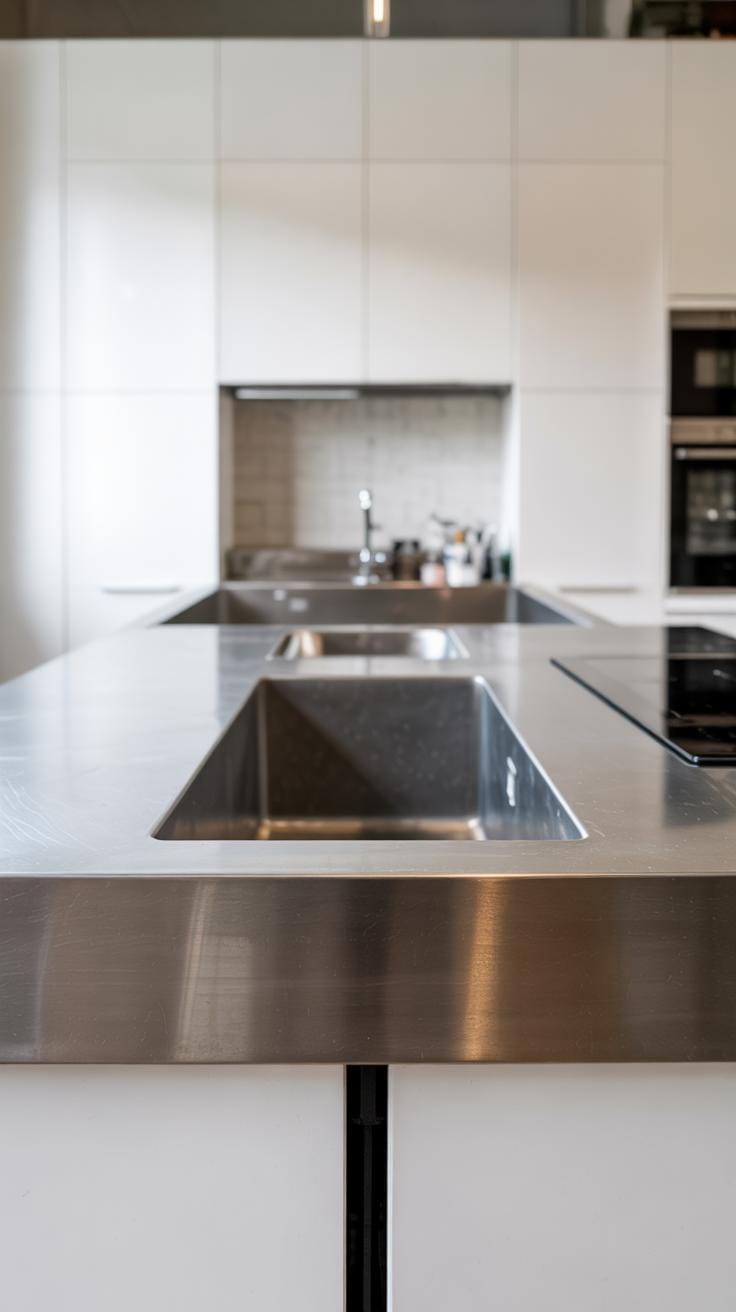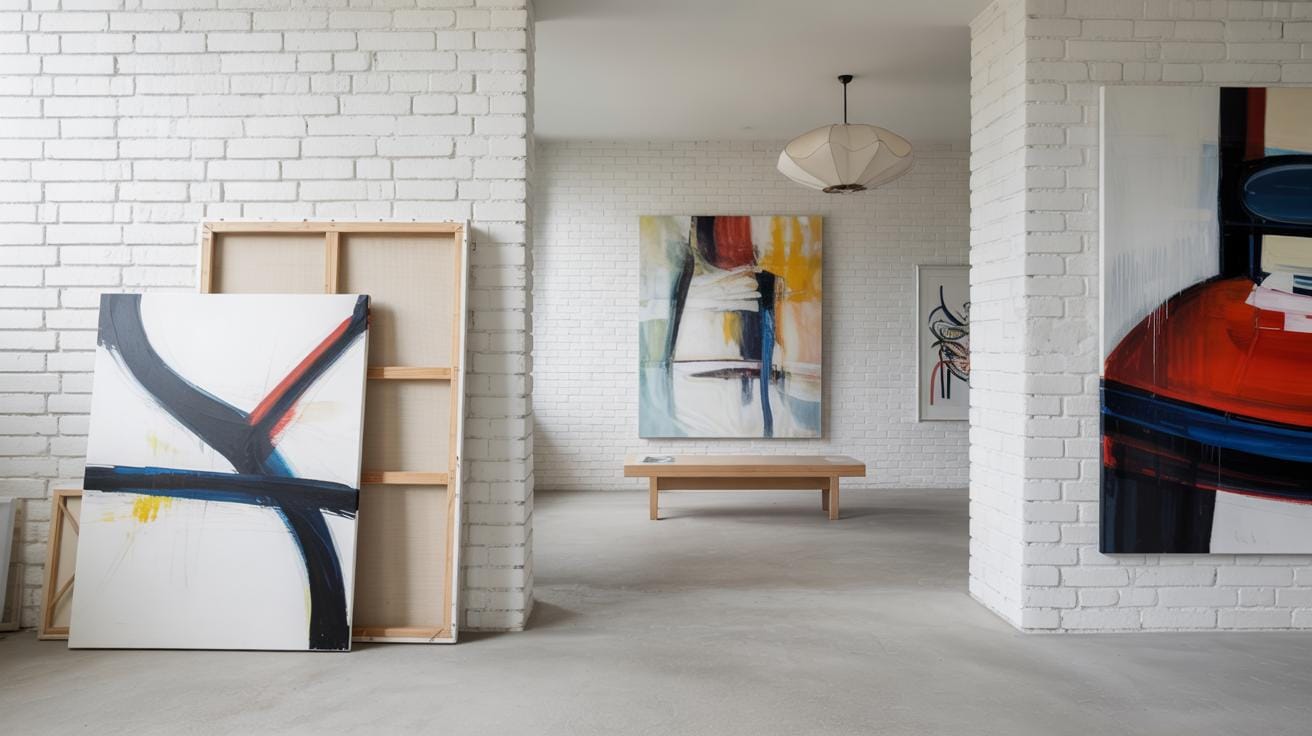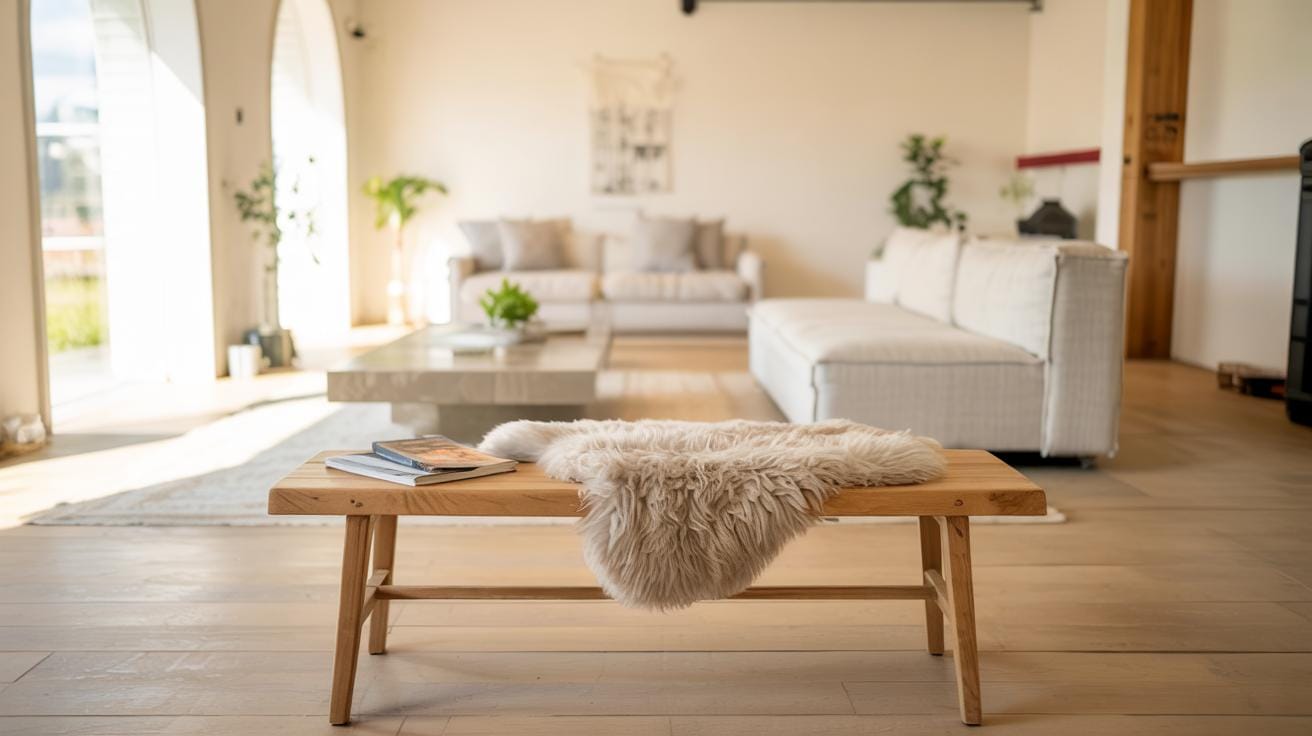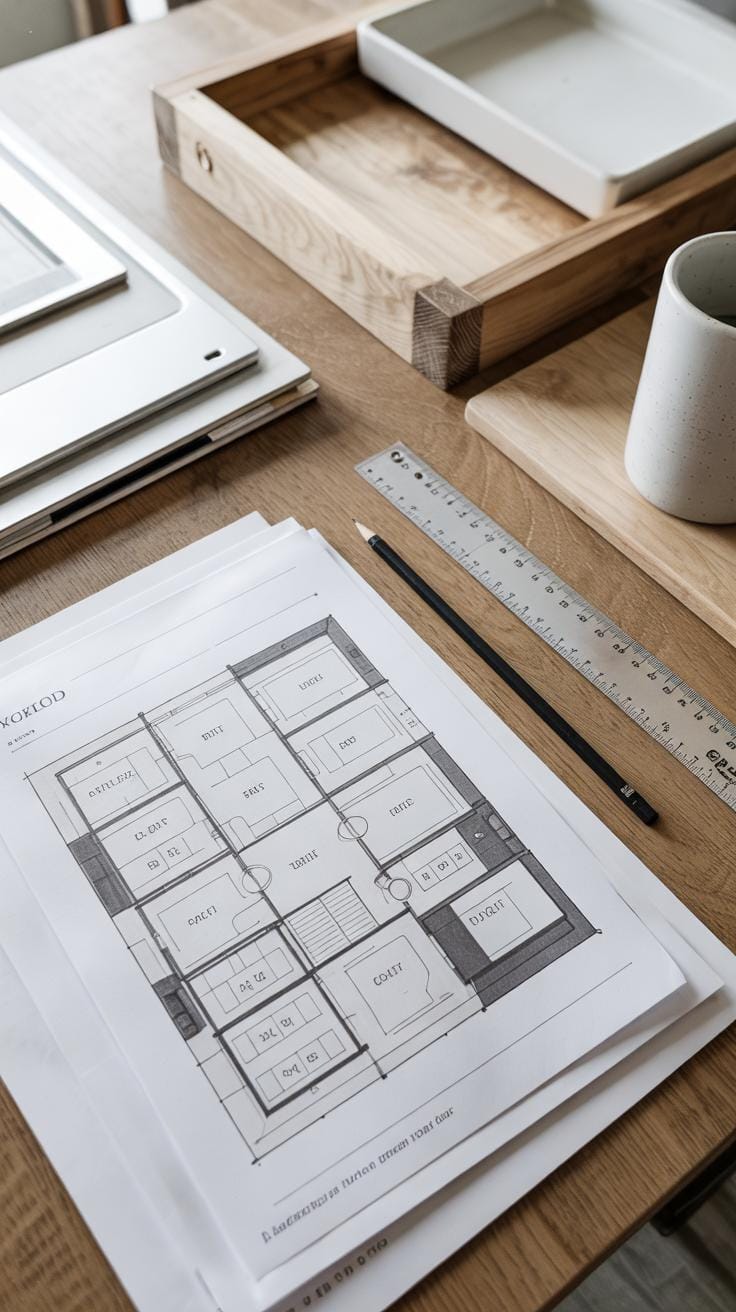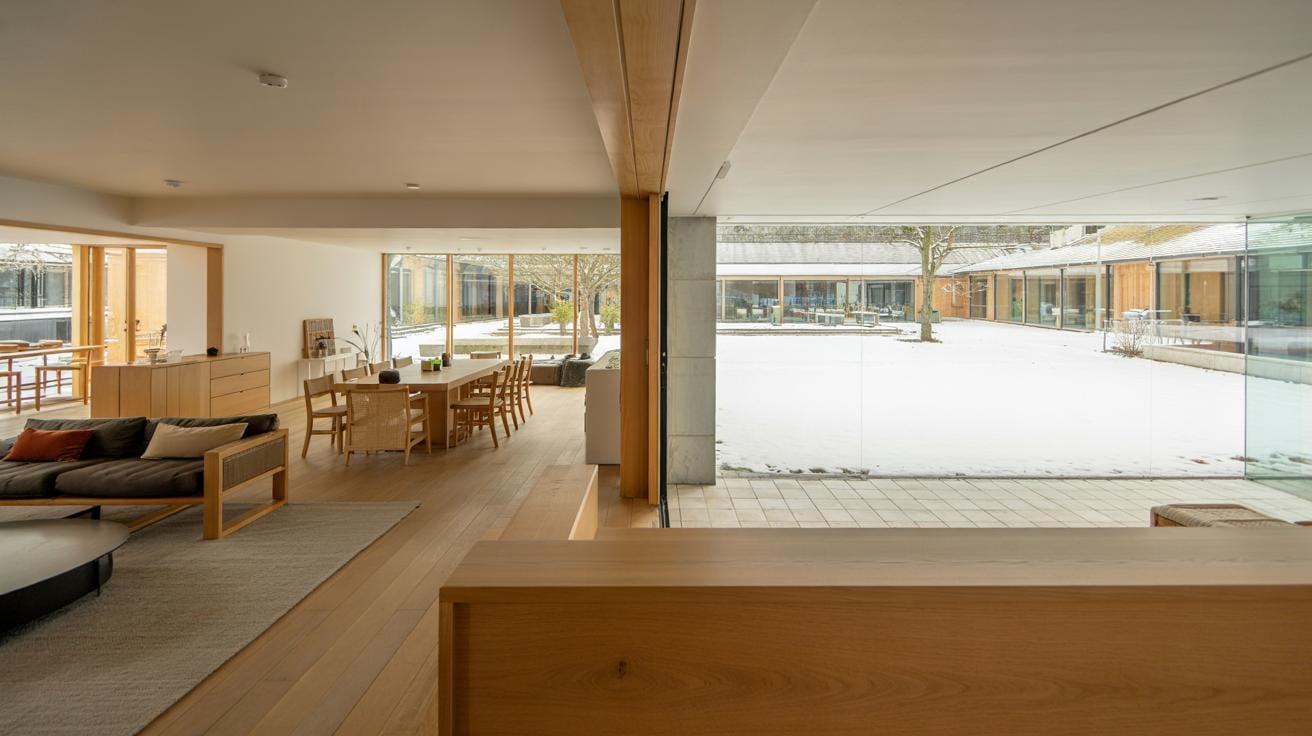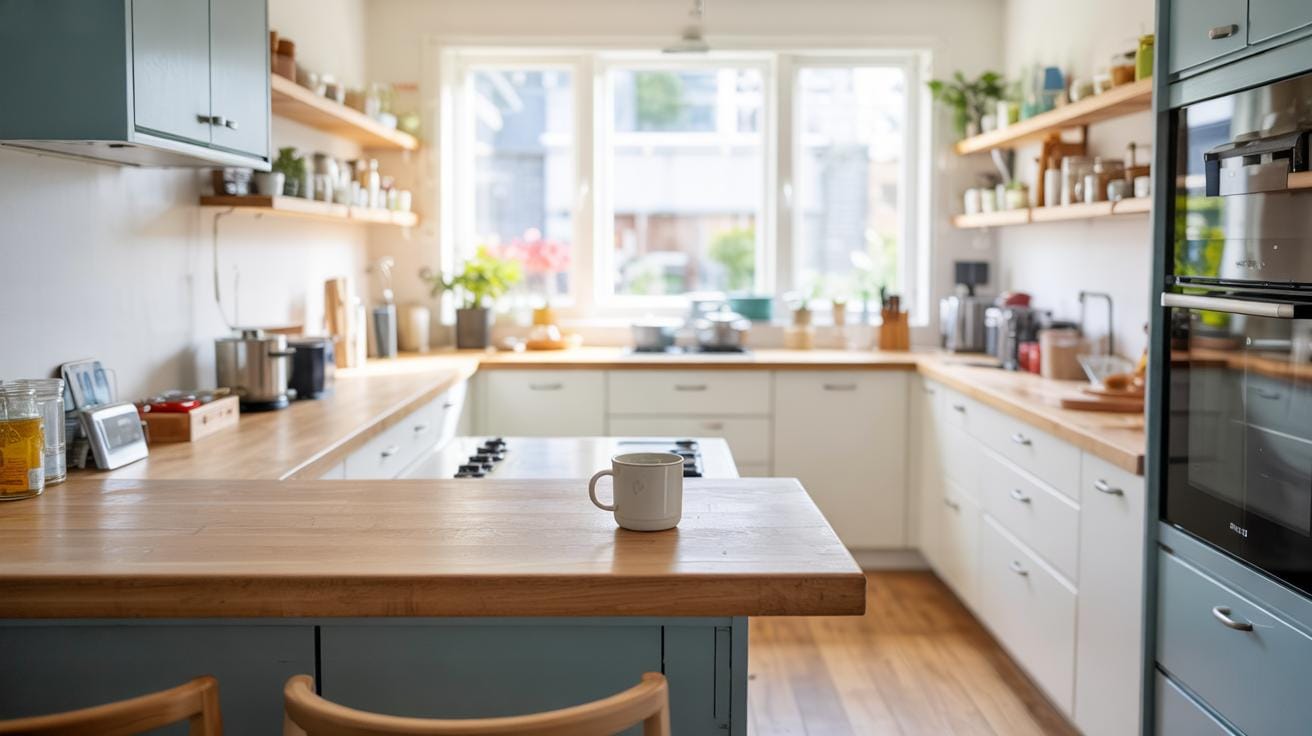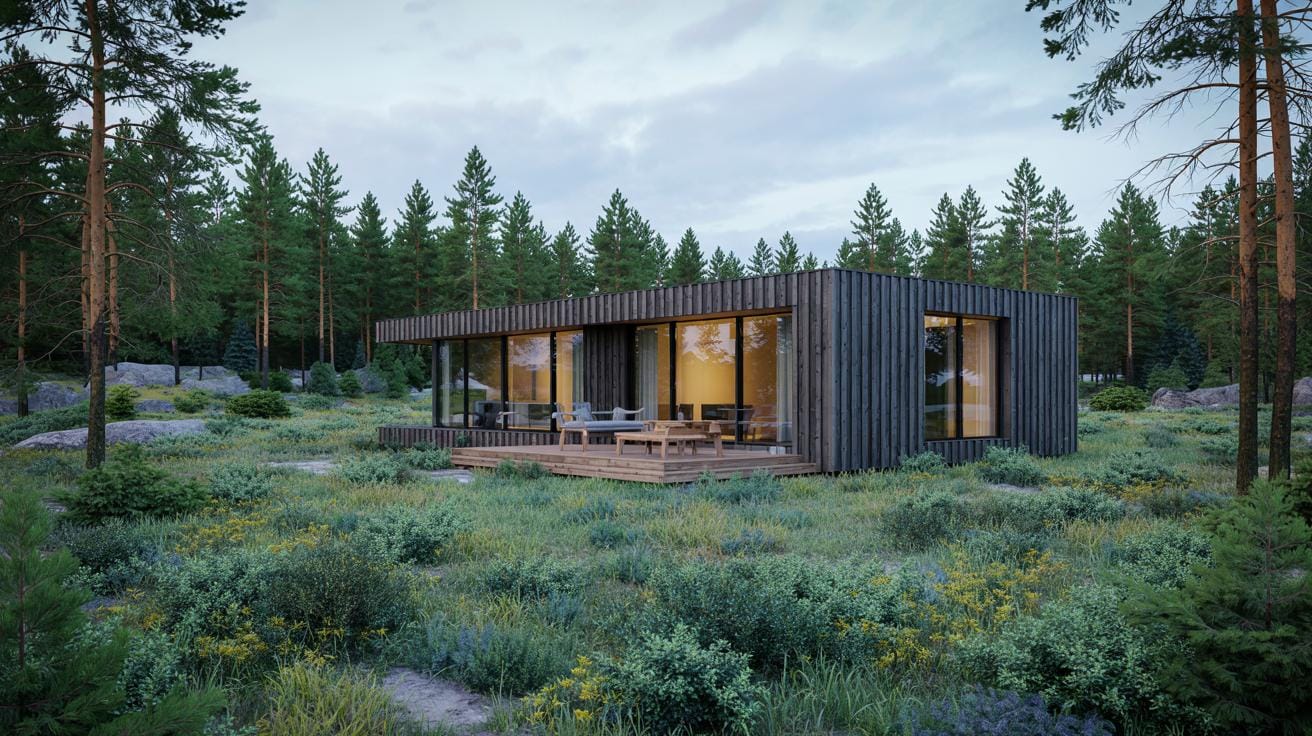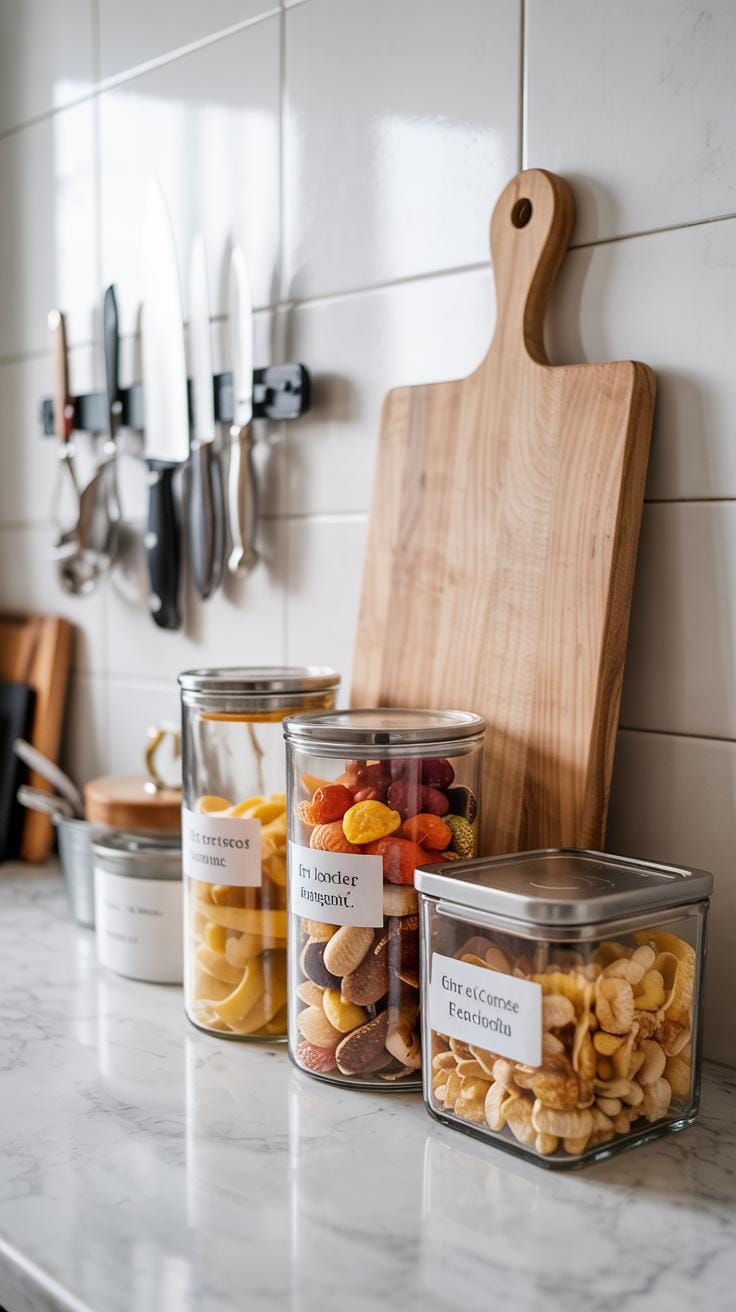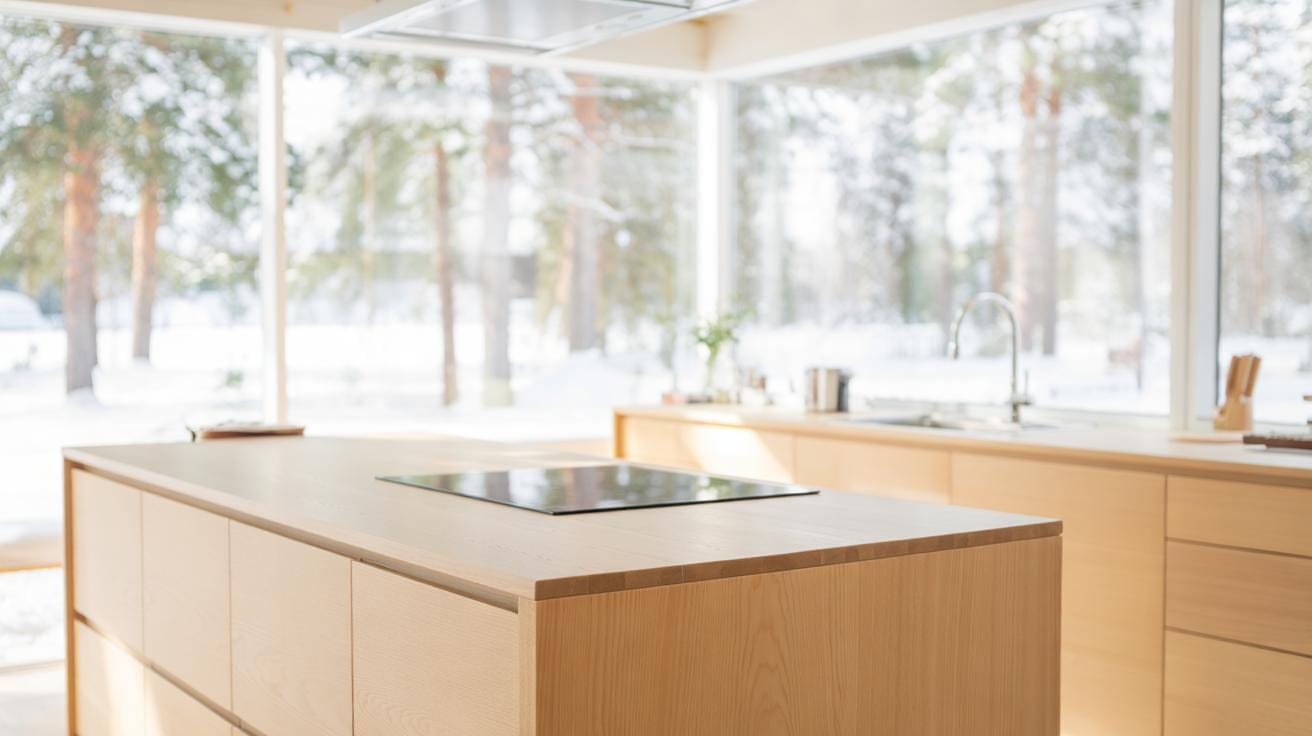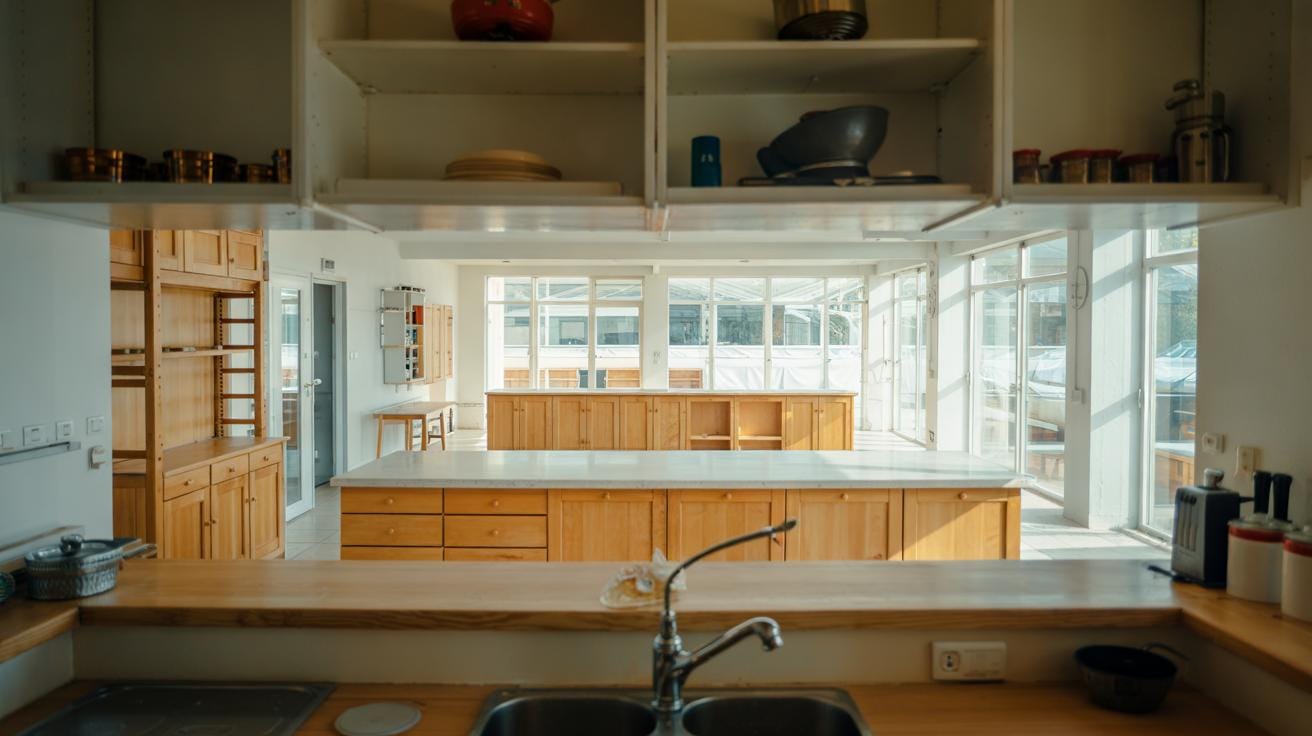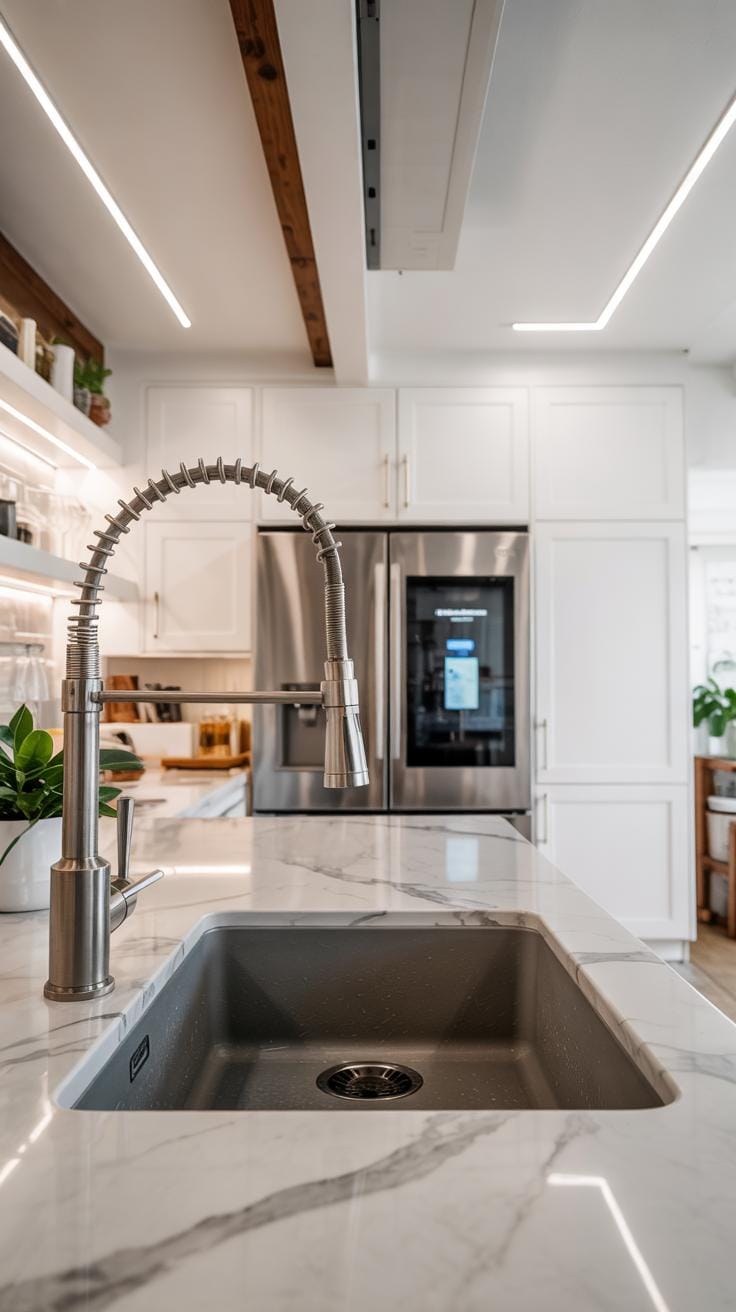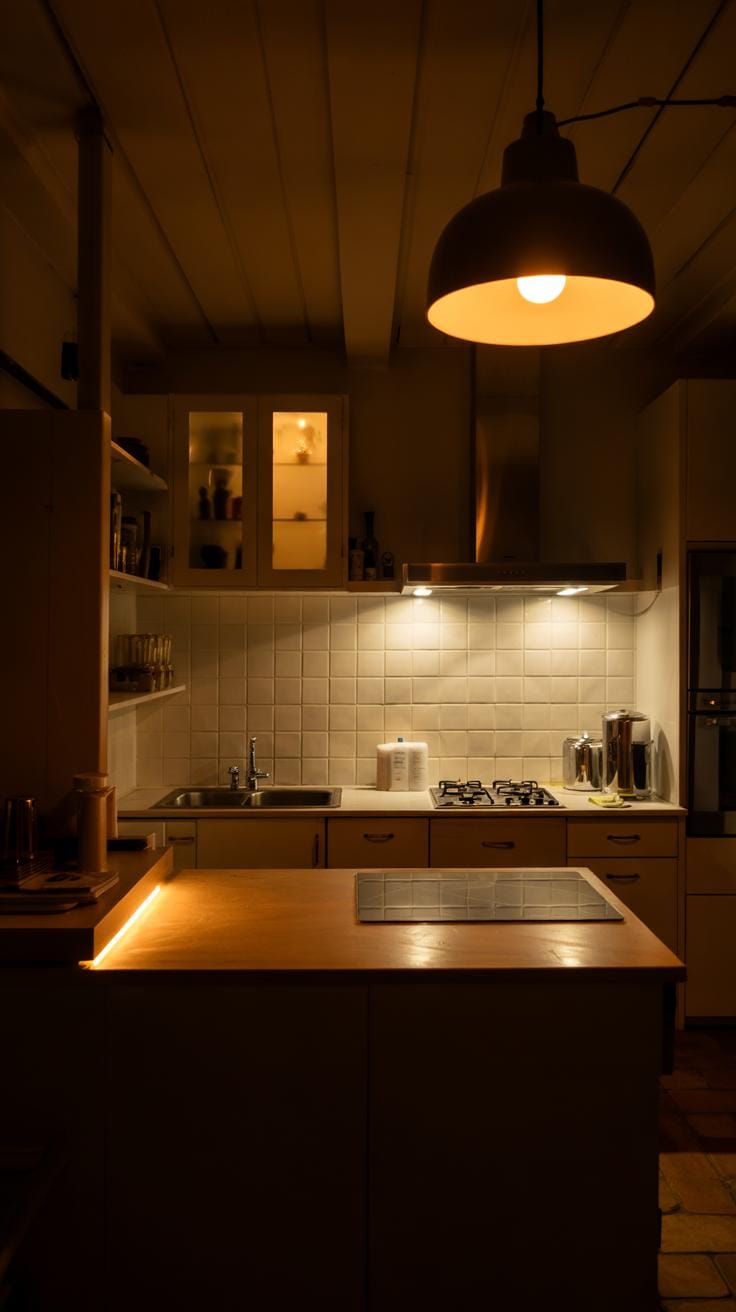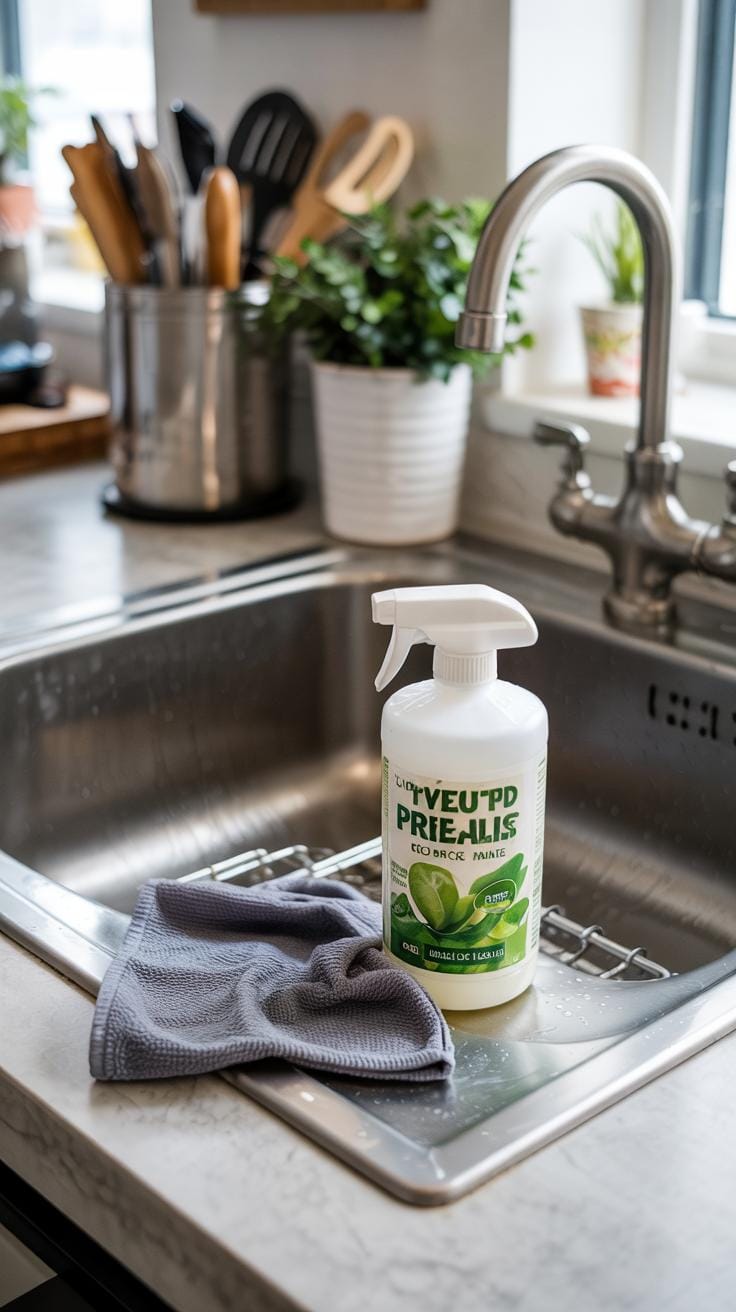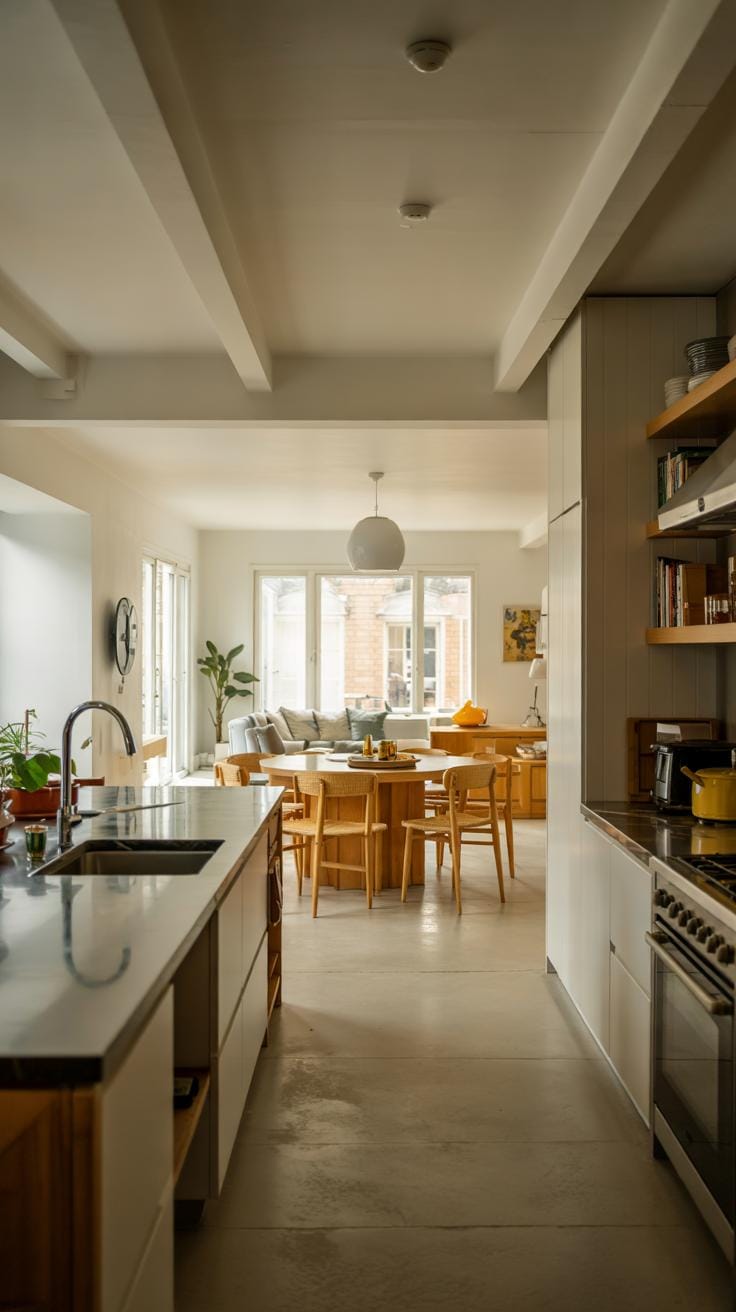Introduction
Minimalist kitchen design helps you create a space that is simple, functional, and easy to maintain. This design style focuses on clean lines, uncluttered surfaces, and smart storage. It encourages you to keep only what you need and organize your kitchen items efficiently. In your minimalist kitchen, every detail matters, from the choice of materials to the layout of cabinets and shelves. Streamlined storage solutions play a key role in achieving this look. They help reduce mess and maximize space, making your kitchen more enjoyable to use and easier to clean.
Many people struggle with kitchen clutter and inefficient storage. What if your kitchen could feel spacious, calm, and inviting? By adopting minimalist design principles and installing smart storage options, you can transform your kitchen. This article offers clear ideas and practical tips to guide you through the process. You will learn how to create a kitchen that works for your lifestyle, reduces stress, and looks good. What storage methods will suit your needs and help you maintain a tidy space? Let’s find out.
Principles of Minimalist Kitchen Design
Minimalist kitchen design focuses on simplicity, functionality, and clean aesthetics. You achieve this by using straight, uncluttered lines and avoiding decorative excess. Surfaces stay clear to create a calm, ordered environment. Choosing quality over quantity matters here. Instead of many small items, invest in a few well-made, durable pieces that serve multiple purposes. This keeps your kitchen both useful and neat.
Neutral colors like white, gray, or beige allow you to maintain visual clarity. When combined with smooth, flat surfaces, these tones help the space feel open. Simple hardware and handleless cabinets support the minimalist look by reducing visual distractions. Think of features like built-in appliances and hidden storage to keep everything out of sight but easily accessible. Such elements help maintain a clutter-free, peaceful kitchen.
Ask yourself what you truly need in your kitchen. Does every item serve a purpose or add to the calm atmosphere? This reflection guides you toward a minimalist space that stays organized and functional.
Simplicity and Functionality
Simplicity and functionality form the backbone of minimalist kitchen design. Every appliance and cabinet should have a clear role, avoiding unnecessary extras. Select only essential tools that suit your cooking style and daily needs. This approach prevents overcrowding and creates space for movement.
Designing an ergonomic layout is key. Place frequently used items within easy reach to reduce effort. For example, keep your prep area near the sink and stove. Think about how your kitchen flows, making sure it supports the tasks you perform most. Poor layout leads to frustration, even in a minimal space.
Simple shapes and forms also contribute. Use straightforward cabinetry without ornate details. An easy-to-clean surface promotes daily use and upkeep. This balance allows your kitchen to function well without sacrificing style. Could you reduce your appliances to just what feels essential?
Color and Material Choices
Neutral and muted colors set a calm tone in minimalist kitchens. Soft whites, warm grays, and light taupes reduce visual noise and create balance. These hues act as a backdrop, letting the kitchen feel peaceful and inviting. You avoid bright or busy colors that distract and crowd the space.
Natural materials like wood and stone add texture and warmth without overpowering the design. A simple wooden countertop offers a durable surface that feels grounding. Stone tiles or backsplashes provide subtle pattern and variation, keeping things interesting yet restrained.
These choices promote timelessness. Avoid trends that may date quickly and require replacement. Instead, use materials that age gracefully and suit your lifestyle. How do your color and material preferences affect your sense of calm at home?
Planning your Kitchen Layout for Minimalism
Designing a kitchen for minimalism means focusing on how the space works, not just how it looks. An efficient workflow keeps everything within easy reach and minimizes unnecessary movement. Think about the tasks you do most and arrange your kitchen so those tasks flow naturally from one to the next.
Common minimalist layouts include galley, L-shaped, and single-wall kitchens. Galley kitchens double up on work surfaces and storage along two parallel walls, making everything easy to access in a narrow space. L-shaped designs open up corners, providing room for social interaction or a small dining area. Single-wall kitchens keep everything in one line, perfect for tiny homes or studios.
Removing unnecessary elements keeps your kitchen feeling open and uncluttered. Focus on clear surfaces and hidden storage to maintain clean lines. Ask yourself if each part of your layout supports your daily routine or just takes up space.
Optimizing Workflow
The kitchen work triangle guides you to place the sink, stove, and refrigerator in a way that keeps travel between them short and simple. Reducing the distance between these points speeds up cooking and cleaning tasks.
Simplify the triangle by keeping the paths direct and free from obstacles. When planning, imagine your movements during meal prep. Do your hands reach what they need without crossing paths or bending awkwardly? This keeps you efficient and reduces fatigue during cooking.
Small kitchens benefit most from a tight work triangle, while larger spaces should avoid spreading these key points too far apart. Efficient movement creates a smooth experience and helps maintain your minimalist goal.
Choosing a Layout Style
Each minimalist layout fits different room sizes and needs. Galley kitchens use less floor space but provide ample storage and prep areas. They work well in narrow rooms but can feel cramped if not planned carefully.
L-shaped kitchens suit medium to large spaces. They allow multiple people to work without crowding. An L-shape can also include an island for extra storage or dining, if your room allows.
Single-wall kitchens save space by lining up all appliances and counters along one wall. This style is ideal for small apartments or open layouts but requires clever storage solutions to keep clutter hidden.
Think about how you use your current kitchen. Which layout would fit your habits and space best? Planning with these styles in mind streamlines your kitchen and supports a clutter-free environment.
Selecting Streamlined Storage Solutions
Your kitchen storage can make or break a minimalist design. Choosing storage that hides clutter while keeping essentials accessible is key. Pull-out drawers allow easy reach to items stored deep inside cabinets, preventing overcrowding on countertops. Hidden cabinets with clean fronts create a seamless look by concealing appliances and supplies you don’t use daily.
Open shelving shows off a few carefully selected items, keeping the space light and airy. Built-in organizers, such as spice racks or utensil trays, keep tools in place and eliminate visual mess. Which storage style fits your habits best? Think about how you use your kitchen and what you want out of every inch of your space.
Streamlined storage solutions reduce clutter, making your kitchen easier to clean and navigate. When you give each item a dedicated place, you avoid the buildup of unnecessary stuff, supporting a calm and functional space.
Maximizing Cabinet and Drawer Use
Using dividers inside drawers separates utensils and gadgets, making each tool easy to find. Adjustable shelves inside cabinets adapt to different sizes, letting you store tall and short items with less wasted space. Pull-out trays bring pans or ingredients to you, instead of making you dig around.
Organizing your cabinets this way supports a minimalist look by keeping surfaces clear and minimizing the need to rearrange frequently. When everything fits neatly inside drawers and cabinets, it stops your kitchen from feeling overcrowded.
Do you notice how clutter disappears when everything inside has a precise spot? Focusing on the unseen parts of your kitchen helps keep your space simple and efficient.
Innovative Storage Options
Hidden compartments beneath countertops or inside islands offer extra storage without adding bulk. Vertical racks on walls or inside doors take advantage of unused spaces for plates, lids, or cutting boards. Multi-use furniture like kitchen carts with built-in shelves can move with you while storing essentials.
These creative options push your kitchen storage beyond traditional shelves and drawers. They help keep counters free from extras and encourage you to store only what you truly need. What spots in your kitchen remain unused and could be transformed into storage?
Using innovative storage solutions supports your goal of a minimalist kitchen by making smart use of every inch, helping you focus on essential tools and maintaining a clutter-free environment.
Decluttering Techniques for Minimalist Kitchens
Start by sorting everything in your kitchen into clear categories: cookware, utensils, appliances, pantry items, and cleaning supplies. Keep only what you use regularly. Items that haven’t been touched in months should be donated or discarded.
Set a schedule to purge your kitchen every few months. Regular review prevents clutter from piling up silently. When buying kitchen tools or gadgets, ask yourself if the item will serve multiple functions or if it duplicates something you already own.
Practicing mindful consumption means buying purposefully and resisting impulse purchases. Notice how often you reach for certain ingredients or tools and adjust your shopping accordingly. This approach helps maintain a neat space where every item earns its place.
Ask yourself what you really need to cook efficiently. Could you prepare meals without specialty gadgets cluttering your counters? Minimalist kitchens thrive when you keep only essentials and remove distractions.
Sorting and Organizing
Begin by emptying your cabinets and drawers. Lay out all items in each category and decide their fate based on use and necessity. Group similar items like pots, pans, and lids together.
Place frequently used items in easy-to-reach spots. Reserve higher shelves for seasonal or rarely used tools. This arrangement reduces effort and keeps counters clear.
Use clear containers or labeled baskets to keep pantry goods visible and tidy. A well-organized kitchen helps you spot expired products and avoids buying duplicates.
Ask yourself if you can store items vertically or use tiered racks to maximize space. Thoughtful positioning helps keep everything accessible yet out of sight.
Preventing Clutter Reappearance
Develop habits to manage clutter daily. Return items to their designated spots immediately after use. This simple action prevents accumulation over time.
Plan your grocery shopping carefully. Avoid purchasing items that don’t fit your cooking style or kitchen setup. This stops surplus supplies from taking over storage areas.
Establish a quick weekly check to clear expired food and unused items. This small routine stops clutter before it starts.
When new items enter your kitchen, consider removing something unnecessary to maintain balance. Such mindful trading helps your space stay efficient and clutter-free.
Incorporating Technology and Smart Solutions
Technology plays a key role in maintaining a minimalist kitchen. It helps shrink the number of appliances you need while keeping your space neat. Using smart solutions means you do more with less. How can you keep your kitchen items to a minimum but still cook efficiently?
Smart kitchens often include appliances designed to handle multiple cooking tasks. Instead of having separate devices for boiling, steaming, and baking, multi-functional appliances combine these functions. This cuts down on clutter and frees up countertop and cabinet space.
Smart storage systems also improve how you manage your kitchen. These systems use sensors or apps to track your pantry inventory. They alert you when supplies run low or suggest recipes based on what you have. This avoids overbuying and keeps your shelves organized.
Space optimization techniques like pull-out shelves, adjustable dividers, and modular compartments add to the efficiency. Technology in storage doesn’t just hide clutter; it makes your kitchen flow better and supports your minimalist design goals.
Multi-functional Appliances
Multi-functional appliances serve several cooking tasks in one unit. For example, an Instant Pot combines pressure cooking, slow cooking, rice cooking, and yogurt making. This saves room by replacing several single-use appliances.
Your choice of appliances can shape how much clutter you face in the kitchen. Finding tools that work in multiple ways lets you keep fewer gadgets on your counters. Do you really need a separate steamer and slow cooker if one machine can do both?
Consider countertop appliances like convection toaster ovens that also air-fry and bake. These versatile tools reduce the need for larger ovens or deep fryers, ideal for small or minimalist kitchens. The fewer single-task items you own, the easier it is to stay clutter-free.
Smart Storage Systems
Smart storage systems simplify organizing your kitchen space and pantry. They come with features such as automated inventory alerts and built-in space optimizers. These features help you track items and locate everything quickly.
Some smart cabinets use sensors to detect item weight and notify you when stocks run low via an app. Others provide adjustable storage modules to maximize cabinet space based on your needs. Do you find it hard to keep track of what you have and what you need?
Using smart storage reduces unnecessary duplicates and makes meal prep faster. Systems with clear labeling or modular trays enable quick changes when your storage demands shift. Technology here strengthens your minimalist goals by cutting down space taken up by mismatched containers or forgotten ingredients.
Lighting and Accessories in Minimalist Kitchens
Lighting plays a key role in shaping a minimalist kitchen. Natural light highlights the clean lines and simple surfaces that define this style. Large windows or skylights invite daylight to brighten your space without extra fixtures. When natural light is limited, choose artificial lighting that blends into the background. Slim, unobtrusive fixtures with cool or neutral tones work best. Recessed lights or under-cabinet strips deliver focused brightness without adding visual noise.
Select accessories with care to keep clutter off your surfaces. Each item should serve a clear purpose, like a sleek utensil holder or a minimalist cutting board. Avoid decorative pieces that only take up space. Instead, let subtle details—such as a simple fruit bowl or a clean-lined clock—add a practical touch without drawing too much attention. What kitchen tools do you use daily that can also enhance your minimalist look?
Effective Lighting Choices
Use natural light as your main source whenever possible. It opens the room and emphasizes simplicity. Position work areas near windows to improve both comfort and efficiency. When natural light fades, add layered lighting that improves visibility but stays subtle. Small LED spotlights or strip lights under cabinets provide excellent task lighting.
Emphasize cool white or daylight bulbs to reflect the clean, fresh feel of a minimalist space. Avoid ornate chandeliers or overly decorative fixtures. Instead, choose sleek and functional designs that complement the kitchen’s lines. Consider dimmer switches to adjust brightness for different times of day. How would controlling your kitchen light improve your daily cooking routine?
Minimalist Accessories Selection
Choose kitchen accessories that combine usefulness with a tidy look. Select multi-functional tools, such as a set of measuring cups that nest inside each other, to reduce clutter. Store small appliances out of sight when they are not in use. Opt for containers and organizers in matching colors or materials to create visual harmony.
Keep countertops mostly clear, displaying only essentials. A streamlined knife block or a simple coffee maker can act as accessories without overwhelming the room. Minimalist kitchens do not need decor for decoration’s sake. By asking yourself what you truly need and use, you keep the space efficient and inviting. What are your most-used kitchen items you cannot live without?
Maintaining Your Minimalist Kitchen
Cleaning and Upkeep
Your minimalist kitchen stays neat when cleaning happens regularly. Set small tasks for each day, like wiping counters and putting dishes away immediately after use. This stops dirt and clutter from building up.
Use simple tools, such as microfiber cloths and gentle cleaners, to keep surfaces spotless without damaging finishes. Clean your sink and faucet often to avoid stains and hard water marks.
Try to make cleaning part of your daily routine instead of waiting for a big mess. Ask yourself: what small step can I take now to keep this space tidy? When cleaning stays consistent, your kitchen will remain both functional and inviting.
Reviewing Storage and Layout
Check your storage once every few months. Does every drawer and shelf still work for your needs? You might find some containers you no longer use or appliances that take up unnecessary space.
Think about how your cooking habits change over time. Maybe you cook more meals from scratch or store more fresh produce. Adjust your storage to fit these changes rather than holding on to old setups.
Rearranging pantry items or adding modular inserts can improve access and reduce clutter. Ask yourself if reaching what you need is easy. Is there a better way to organize that saves time?
Keeping your layout fresh helps prevent your minimalist kitchen from feeling stale. It also supports your daily activities by making sure everything stays where you need it.
Benefits of a Minimalist Kitchen Design
A minimalist kitchen with streamlined storage offers more space to move and work. When your countertops and shelves hold only what you need, you gain room to prepare meals without obstruction. This extra space helps you avoid feeling cramped and lets you enjoy cooking more. Removing excess items also simplifies organization. Each tool or ingredient has a set place, reducing time spent searching.
Cleaning becomes faster when surfaces are clear and cabinets contain fewer items. You can wipe down counters easily and maintain a hygienic space with less effort. Notice how a tidy kitchen lifts your mood and clears your mind. Clutter can cause distraction and stress while cooking. A clean, well-ordered kitchen promotes calm and focus.
Think about your daily routines: Would a simpler kitchen help you stay organized? Could less clutter make your cooking space more inviting? Considering these benefits makes it easier to plan a kitchen that supports your lifestyle.
Space and Organization
Minimalist design frees up unused corners, turning them into practical zones. Open shelves or pull-out drawers keep essentials accessible without crowding. When you have fewer items, you can group them by use, like baking tools near the oven.
Visual clutter reduces when storage fits everything neatly. Imagine opening a cabinet and instantly finding precisely what you need. An organized kitchen saves time and cuts down frustration during busy moments.
You can increase space simply by choosing cabinets that reach the ceiling or adding slim storage racks inside doors. These smart choices make full use of available space without adding bulk.
Lifestyle and Well-being
Living with clutter affects your mind more than you realize. A messy kitchen can increase stress and disrupt mealtime routines. In contrast, a clutter-free kitchen feels peaceful and supports healthy habits.
Eating well becomes easier when your space encourages cooking instead of grabbing fast food. A minimalist kitchen can promote mindfulness, making each meal a chance to slow down and focus on taste and nutrition.
Ask yourself how your kitchen environment shapes your day. Could a simpler, more open space boost your mood and reduce stress? Small changes in your kitchen can lead to better well-being overall.
Conclusions
Minimalist kitchen design brings order and clarity to your cooking space. It improves your daily routine by making everything easier to find and use. Streamlined storage solutions are essential to maintain this style. They help you keep your kitchen tidy and prevent items from piling up. Considering your unique needs and habits is important when choosing storage options. Simple changes, like drawer organizers or vertical shelves, can make a big difference. You can create a kitchen that feels spacious without sacrificing functionality.
Your minimalist kitchen can be a peaceful and efficient place. It allows you to focus on cooking and enjoying meals. Regularly review your kitchen items to keep clutter under control. Use your storage wisely and avoid overcrowding. By doing this, you will protect the clean and neat appearance you want. Minimalist kitchens are not just about style, but about improving how you live. What small steps will you take today to simplify your kitchen and enhance your space?

